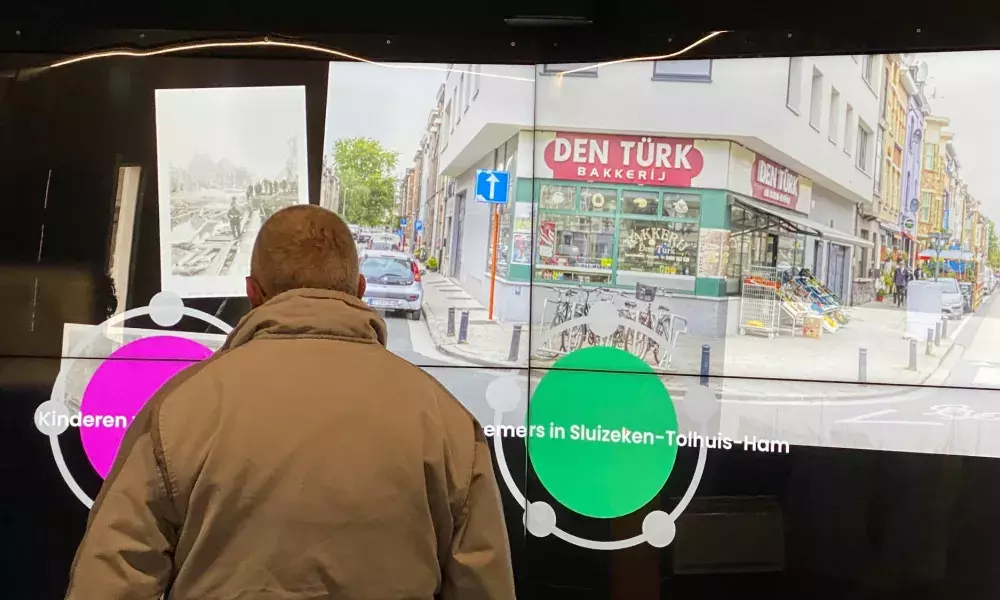
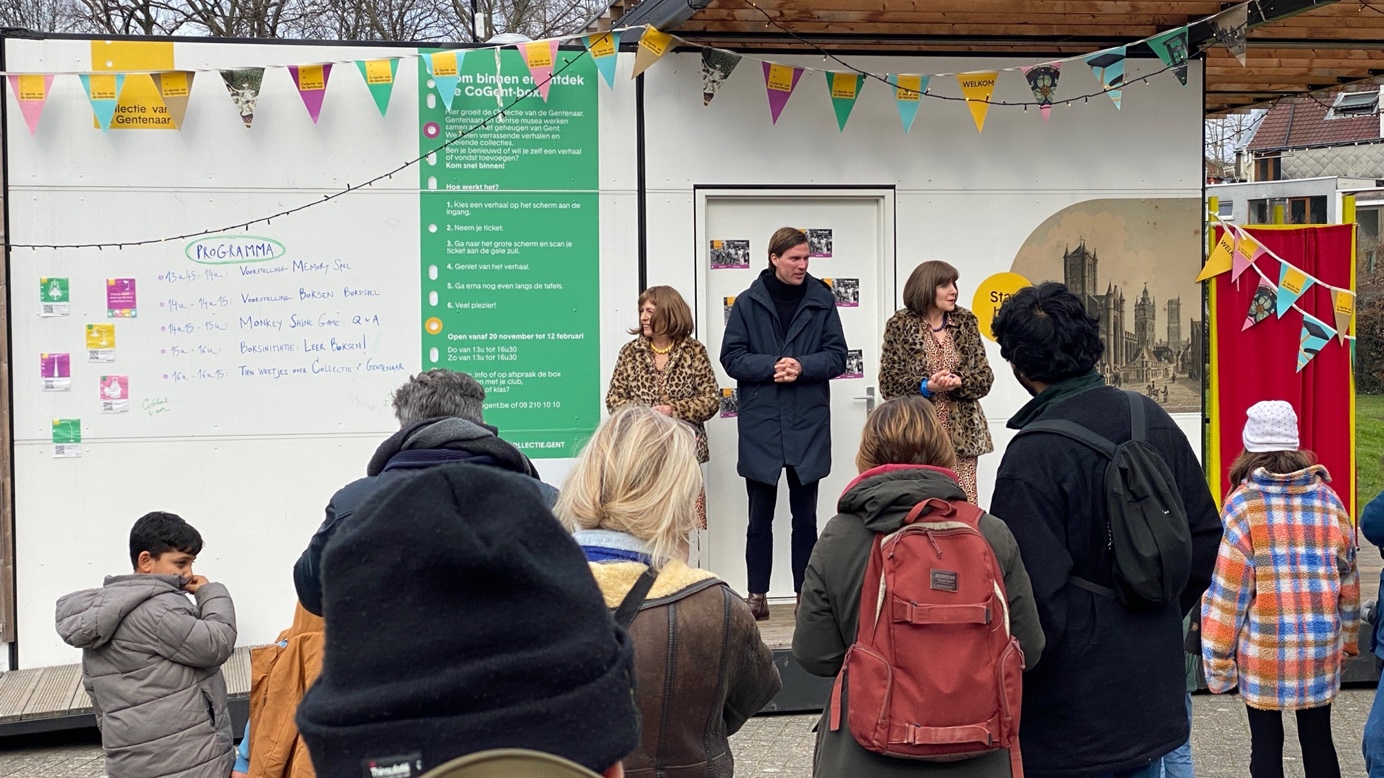
A theatre play explaining the CoGhent project in front of the Box (photo credits: François Jégou)
This Sunday was the last day of the last of the three CoGhent Box installations in the city of Ghent: it's a party, a small celebration in a park in the Sluizeken-Tolhuis-Ham neighbourhood: a presentation of the project in the form of a theatre play that takes the Mayor to task, stalls that serve drinks and prepare "gestreken mastels", a speciality of the city, literally "ironed buns" with an iron to crush the bun and melt the sugar. ... an animation that is both fair and funny, echoing the Ghent Collections, the focus of the project!
SECOND GENERATION APPLICATION
And what's new on the CoGhent side?
In the CoGhent Box a new story is told about the district of Sluizeken-Tolhuis-Ham, making the Box more relevant to the people who live in the vicinity, in addition to being a "mini-museum" (as the inhabitants of Watersportbaan, the previous district where it was installed, called it) that makes the collections of the city's cultural institutions available to the neighbourhoods.
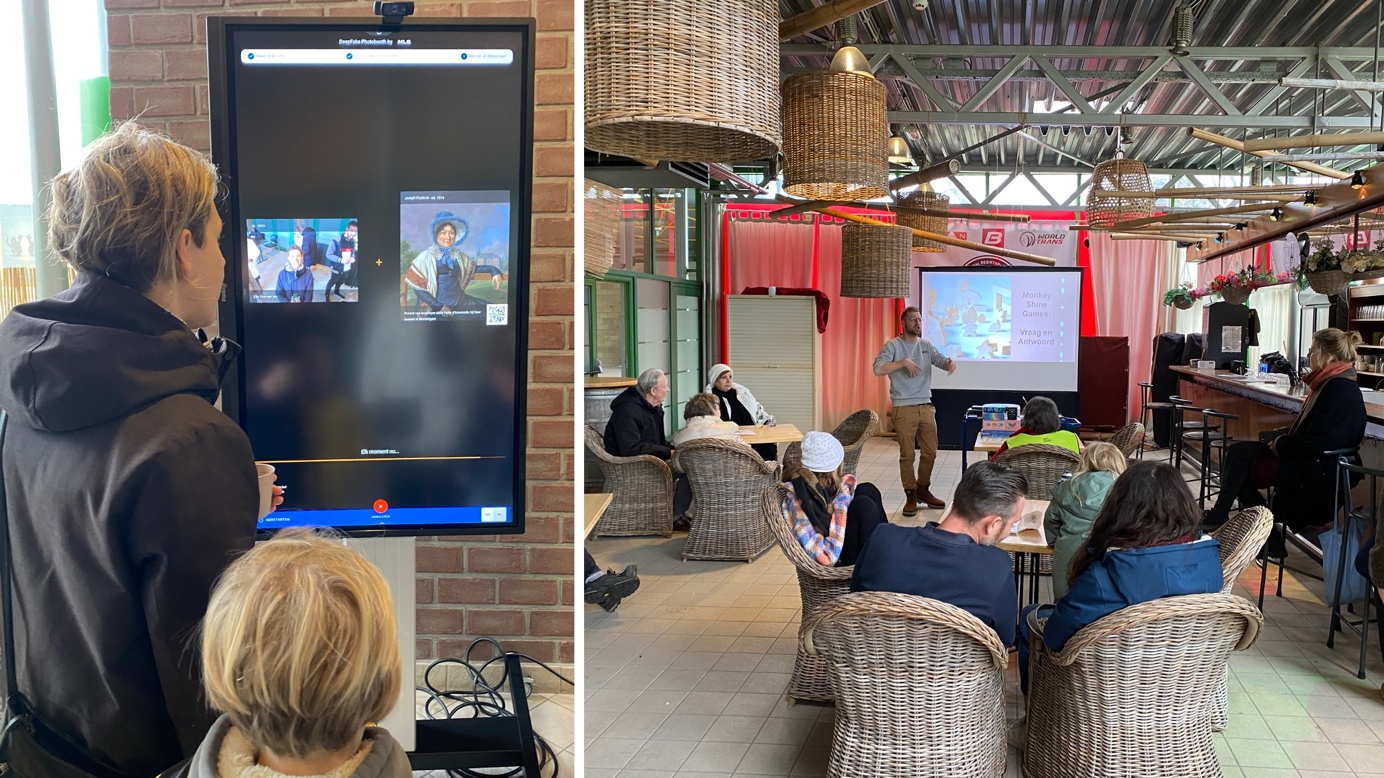
Presentation and demo of the projects emerged from the CoGhent Cocreation Fund (photo credits: François Jégou)
But above all, in the adjoining building, the first second-generation applications of the CoGhent project are unveiled, some of them in prototype form. If the CoGhent Box can be described as a first generation application, imagined before the project started in the application for Urban Innovative Action funding, then the projects resulting from the Cocreation Fund represent a second generation of applications made possible by the technological blocks developed by the CoGhent project and the gradual availability of digitised cultural data from the city's museum and archive collections.
The Cocreation Fund is a process of call for projects, selection and subsidisation of applications recombining digitised cultural data. An example? “DeepFake Photobooth” allows visitors to choose a painting from the Ghent Collections, take a photo of themselves and have their face inlaid by an image morphing program in the place of a famous city character in the painting... Nothing revolutionary if you think of the avalanche of photo-morphing apps available in the various App Stores. But it is an attempt to recombine local cultural heritage with contemporary selfie practices, a half-playful, half-educational link between past collections and local residents...
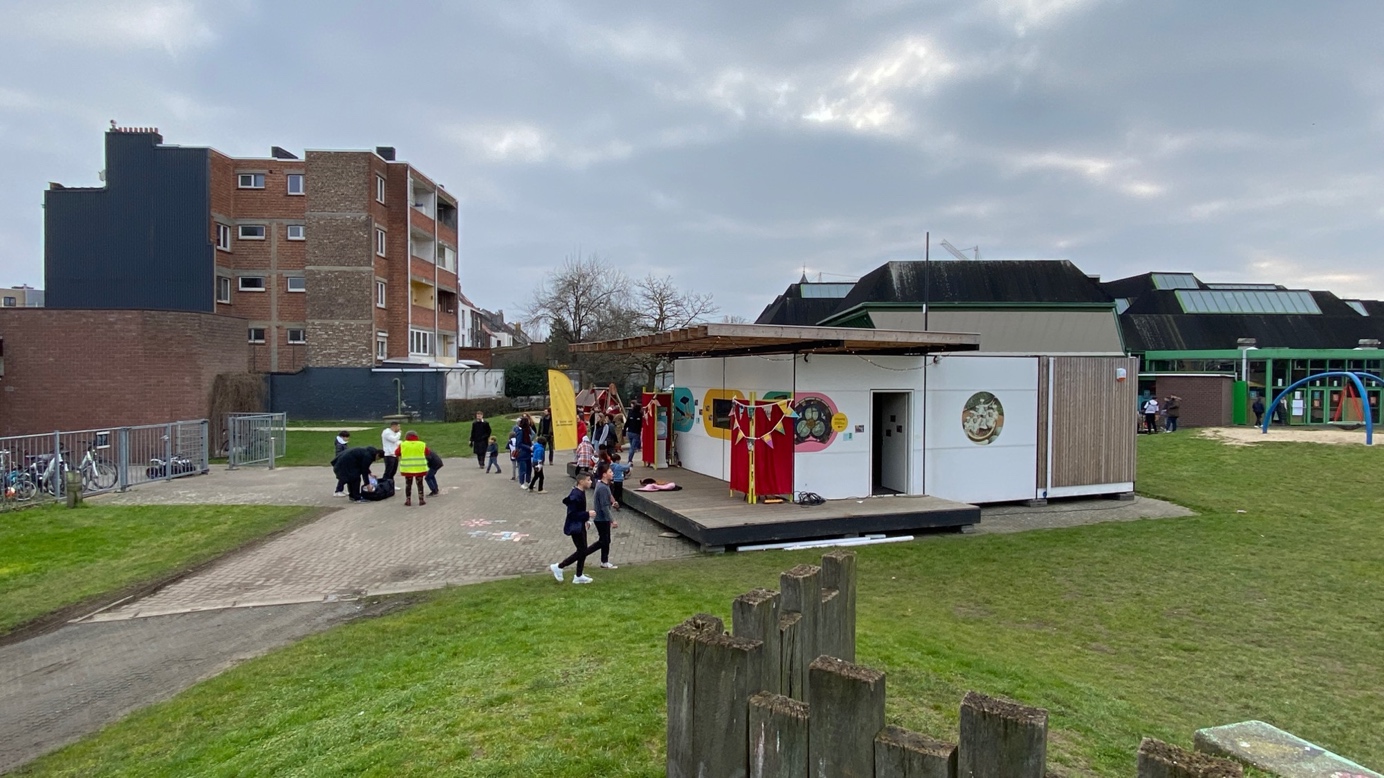
The third installation of the CoGhent Box in the Sluizeken-Tolhuis-Ham neighbourhood (photo credits: François Jégou)
A CUMBERSOME BOX?
The first prototype often reveals the imperfections of the beginner. In retrospect, these imperfections become obvious with the growing experience that this first prototype allowed the project to acquire. If, in addition, a pandemic occurs that seizes up the processes of co-creation between the project partners and of the participatory design with the inhabitants, the first result may seem disappointing. This seemed to be what emerged from "CoGent Box, a mini-museum in the neighbourhood”, a video made during the second installation of the CoGhent in the Watersportsbaan. And this is still the feeling when you look at the people around the Box on this last day of the experiment: more activity outside than interest in what is going on inside... An application that struggles to reflect the full potential of the technological aspect of the CoGhent project and its ambitions in terms of social cohesion through access to digitalized cultural data... A CoGhent Box, the first prototype, which seems a bit cumbersome today, and which takes up a good part of the project's visibility at the end of the 3 years of UIA funding.
MANY CAKES?
The second generation of prototypes resulting from the Cocreation Fund process is starting to emerge, showing a richer and more differentiated vision of applications of the technological and cultural potentials of the CoGhent project, and this is a good thing!
In August 2021, a first web-article entitled "many ingredients and cakes" wondered about the perspectives of landing of the CoGhent project: multiple actors crossing the worlds of data exchange technologies, cultural data curation, participation of different user communities in the city... in short, multiple ingredients but to make not one cake but several... And this is what is actually beginning to emerge from the Cocreation Fund process: a first range of applications of a more cultural nature and another of a more technological nature corresponding to the Fund's two lines of financing, some lighter, more playful or even futile and others more useful, experimental, profound... the famous winning cocktail of "futile & useful" in information technologies.
The race against the clock is now engaged to fill with many good outputs the CoGhent's deliverables shelves, enriching the Coghent Box's feedback alone!
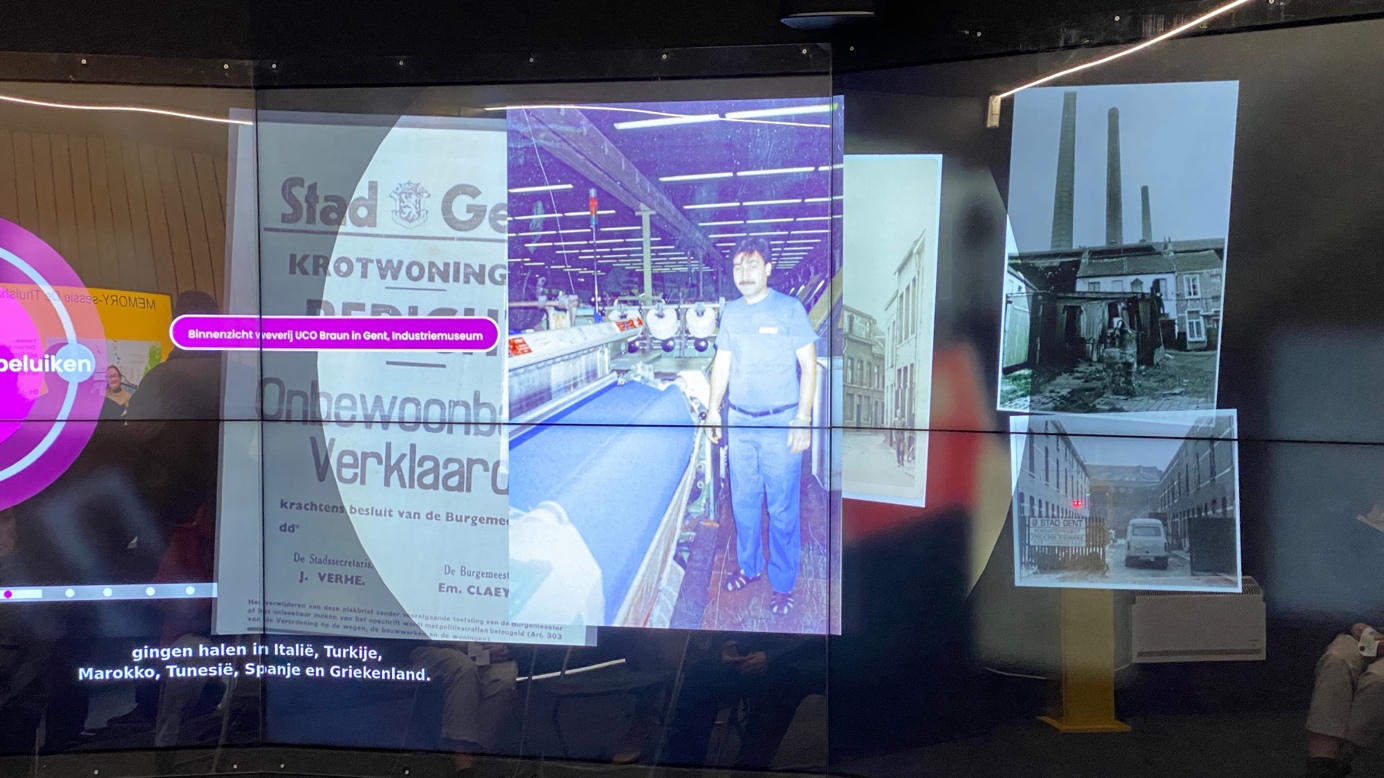
Memories from Sluizeken-Tolhuis-Ham neighbourhood presented in the CoGhent Box (photo credits: François Jégou)
NO LONGER SO SMALL OR NOT YET BIG ENOUGH?
"The project sometimes seems too big to be pursued by local actors and not big enough to be carried or to interest national and European actors…” Olivier van D'huynslager, one of the two initiators of the CoGhent project, sums up the headache of ensuring the sustainability of such an innovation project.
After three years of funding by the Urban Innovative Action programme, the project has acquired a significant size and requires development resources that seem out of reach for the actors involved and the city in particular. The UIA funding has made it possible to bring about an innovation that the actors involved would not have had the means to carry out alone. But if the project has indeed reached the expected stage of development, the innovation in question has perhaps not yet reached a stage of profitability (to use the vocabulary of innovation in the private sector) or even a stage of sufficient maturity to represent an investment value outside the territorial context from which it emerged and to attract sufficient other funding...
Conversations about the landing of the project are going well within the CoGhent community gathered with a drink in hand at the end of this Sunday afternoon, half balance and half perspective:
BUDGETARY AUSTERITY
First of all, there are the drastic budgetary restrictions imposed by the city's economic situation: the explosion of the energy bill following the Ukrainian conflict, the post-COVID exhaustion of city services, investment of the city in its public sector contrasting the overall political climate in Flanders, etc. "It is a part of the permanent teams of the city services that are suppressed, complains Pieter-Jan Pauwels, the second initiator of the project with Olivier, so convincing the elected representatives to pursue a project that comes on top when we don't know how to ensure the day-to-day running of services is not an easy task...”
TEMPORARY PROJECT COMMUNITY?
This is also the difficulty in a very large multi-stakeholder project like this one of coordinating and synergising the objectives of each party, of getting them to participate in a common project, and not each one in the parts that interest them... "Too often, partners have committed themselves to a specific service for which they have been contracted, comments one of the CoGhent stakeholders, and once their services have been completed, they tend to disengage from the project, or even never really feel committed beyond the services for which they had signed a contract..."
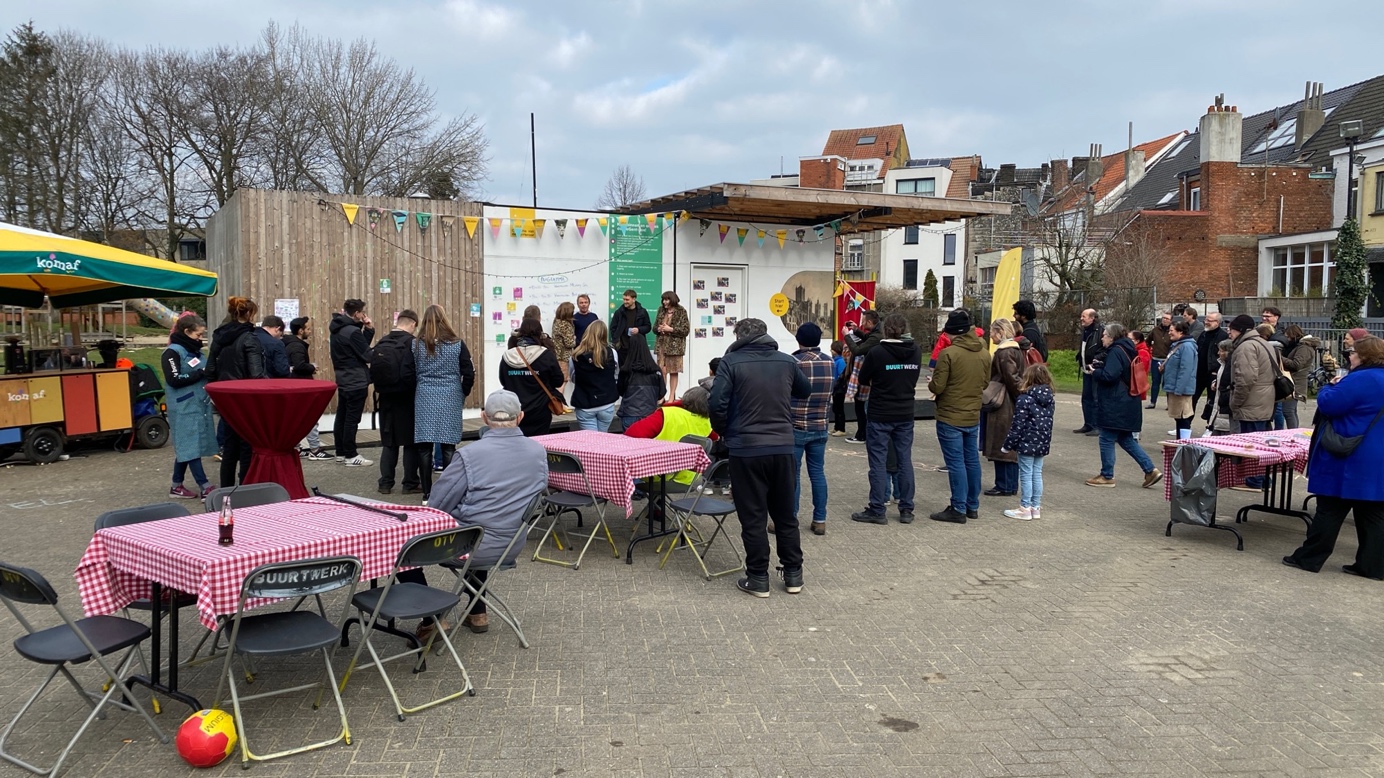
The CoGhent partners discussing sustainability of the project (photo credits: François Jégou)
AVOIDING "PROJECTIFICATION
Finally, the issue of the project's sustainability raises the question of how the financial support offered by Urban Innovative Action works. More precisely, what are the effects induced by the structure of the subsidy distributed over 3 consecutive years and which stops abruptly at the end of these years: beyond the aggravating context of multi-crisis in which CoGhent is evolving, the funding ends, the contractual staff hired for the duration of the project look for a new job; the partner institutions return to their daily business, the project community formed ad hoc tends to disintegrate even though an effort is necessary to bounce back and set the follow-up of the project...
What would happen, for example, if instead, funding was progressively diminishing on a longer period: 110% to support the start-up in the first year, 100% in the second to build up momentum; 50% in the third to find a second wind and then progressively 30% and 10% in the fourth and fifth years to keep the project's inertia in motion, while a follow-up is put in place?
Or what about a start-up type of support with a first stage of innovation budget validated by a proof of concept, a second more substantial stage of development budget validated by an experiment, a third stage of increasing investment for a rise in power, etc.?
Many other models could be compared, discussed and evaluated. The aim is to avoid what the sociologist Ulrike Felt from the University of Social Sciences in Vienna calls the "projectification phenomenon", i.e. the support by public authorities of projects financed for a limited period of time, which leads actors to carry out one project after another without having the means to really sustain any of them...
The sun is declining on this symbolic day where everyone feels that something is ending because it is the last day of the CoGhent Box installation and that a new cha
About this resource
The Urban Innovative Actions (UIA) is a European Union initiative that provided funding to urban areas across Europe to test new and unproven solutions to urban challenges. The initiative had a total ERDF budget of €372 million for 2014-2020.
Similar content




